| Umělec magazine 2000/4 >> The Japanese Interior | List of all editions. | ||||||||||||
|
|||||||||||||
The Japanese InteriorUmělec magazine 2000/401.04.2000 Tomodachi no Uranchan (Přátelé Uranové dívky) | japan | en cs |
|||||||||||||
|
The fatally known clarity of Japanese interior style comes as no surprise. We are so sure of it that we, as Europeans, do not even doubt this fact.
Is what we see in beautiful catalogues reality? The average Japanese house is mostly unified in style according to contemporary Japanese architecture, employing wood, paper and plastic. Our brick and stone buildings (including prefabricated blocks of flats) represent a huge gap beyond their comprehension. Such homes are considered luxurious in Japan. Today’s young generation in Japan tirelessly flips through magazines and advertising flyers similar to those published by Ikea. Maybe they long for European and American interiors; nevertheless they only have a notion of what that means, coming from whatever available sources they have, such as American films. Reality is something else entirely. Young people who decide to become independent and leave home usually move to a distant village on the other side of the island for a few years. The village, town, or wherever they decide to work provides them with free immigrant lodging. A “temporary solution” is the most obvious and frequent phrase. Depending on your position and how the local community values your presence and your potential future contribution to the community, they may renovate the house after the former immigrants have left. But they don’t have to. It truly depends on the position you will assume in the society. American teachers invited by the Japanese government are usually accommodated in the cleanest Japanese interiors I had a chance to see, which included the traditional Japanese toilet. They come with nothing but a suitcase and their native language and they must feel like this is the weirdest thing. The home space is decorated in shades of green and natural wood tones. Instead of carpets, floors are covered with yellowish green mats called tatami. Cabinets are built into walls just like in Adolf Loos’s villa Muller in Prague. The doors slide open and windows are single layered. To them double-layered windows are the ones that include a wooden frame with stretched handmade paper. In the evening, it feels like you are living in a paper lantern. “Nughi kakuru, Haori sugata no, Kotcho kana!” translates as: When a woman takes off her kimono, she looks like a butterfly. Horizontal and vertical lines The entrance to a house is an introduction to other smaller yet original articulate spaces. It consists of a tiny square hallway, and, in the case of larger and more luxurious homes, it is more rectangular. The floor is concrete, occasionally completed with a simple surface coating. Entering a home is a gradual process. While the entry lies on ground level, once you walk inside you have to take off your shoes quickly and then hop up to the residential level of the house, which usually has a clean, glossy wooden floor. The floor’s wooden pattern corresponds with that of the wallpaper. Horizontal and vertical lines gently and neatly intersect. For a moment you almost feel like you know exactly where the lines are taking you. But at the same time you can’t help feeling like you have somehow entered the craziest labyrinth; you know which direction to go, but you’re afraid of the foggy phantom floating just above the floor in this endless hallway. Everything is kind of mystical. Perhaps it’s due to the fate and history of the house. An interesting fact, however, is that even brand new homes evoke the same feeling. Customs You’re inside the house visiting. At an unobtrusive moment the housekeeper arranges your shoes in the hallway so that their tips point at the door. Forgetting to do this is considered improper. Your assigned slippers, too, are aimed outwards so that you can put them on again after having left them before entering a room with carpets or tatami. Incidentally, the largest size they come in is 25 cm. In a Japanese home, you constantly take your slippers on and off; an extra pair resides even in the toilet. The home’s interior is very pleasant but small. Sitting in a room, you will find that it has nothing in common with the stereotypical idea of the clean and empty Japanese interior. The space’s subtlety disables any attempt at organization and you may see clothes, various seasonal tools, equipment, and dishes scattered around. The classic interior can be found in tearooms and temples. The Japanese soul and its western timber European style is called “yofu” while Japanese style is “wafu.” It includes architecture fashion, diet, and housing. The Japanese “wa” style was not originally defined. The Japanese are known for being very skillful people with the incredible ability to adapt. Depending on the circumstances and era, they either strictly separate the Japanese style from western, or they skillfully mix and create new and improved specific things. One of the “wa” architectural styles includes “sukiya,” which is characteristic for its fixed form and set production technology, seemingly leaving space for an individual approach. It is based on patterns and their endless combinations. In addition to architects and builders, there were also other masters of this style, including experts at the Japanese tea ceremony, calligraphy, traditional dance, and music. Their skills were then easily applied to designing new homes. It is difficult for today’s architects to imitate the suggestive line because it places emphasis on delicate esthetic sensibility as well as on a professional and deliberate choice of materials. Wood is not considered just one of many construction materials; for the Japanese it is the basis of all, both in the sense coming to understand it and learning how to control it. In most homes you will find a column forming an independent object or statue. It is usually a huge, naturally treated carved figurative statue connecting the Japanese with nature.
01.04.2000
Recommended articles
|
|||||||||||||
|
04.02.2020 10:17
Letošní 50. ročník Art Basel přilákal celkem 93 000 návštěvníků a sběratelů z 80 zemí světa. 290 prémiových galerií představilo umělecká díla od počátku 20. století až po současnost. Hlavní sektor přehlídky, tradičně v prvním patře výstavního prostoru, představil 232 předních galerií z celého světa nabízející umění nejvyšší kvality. Veletrh ukázal vzestupný trend prodeje prostřednictvím galerií jak soukromým sbírkám, tak i institucím. Kromě hlavního veletrhu stály za návštěvu i ty přidružené: Volta, Liste a Photo Basel, k tomu doprovodné programy a výstavy v místních institucích, které kvalitou daleko přesahují hranice města tj. Kunsthalle Basel, Kunstmuseum, Tinguely muzeum nebo Fondation Beyeler.
|







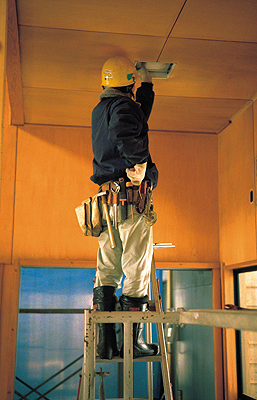
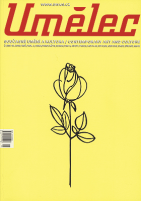






















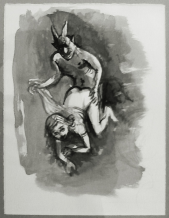

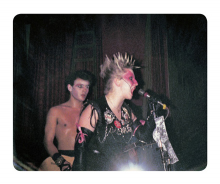
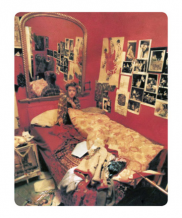


 We Are Rising National Gallery For You! Go to Kyjov by Krásná Lípa no.37.
We Are Rising National Gallery For You! Go to Kyjov by Krásná Lípa no.37.
Comments
There are currently no comments.Add new comment